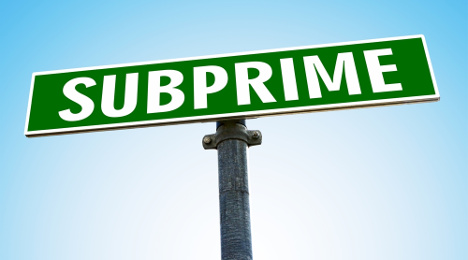Subprime auto loan ABS performance worsens in May

By subscribing, you agree to receive communications from Auto Remarketing and our partners in accordance with our Privacy Policy. We may share your information with select partners and sponsors who may contact you about their products and services. You may unsubscribe at any time.
NEW YORK –
S&P Global Ratings noticed a stark difference between the prime and subprime segments when examining collateral performance in May within U.S. auto loan asset-backed securities (ABS).
Analysts reviewed the May data and found that in prime segment, relative to April, losses decreased slightly while delinquencies held stable. On a year-over-year basis, however, prime losses and delinquencies rose despite recoveries improving.
For subprime, S&P Global Ratings determined all three metrics — losses, recoveries and delinquencies — worsened both month-over-month and year-over-year.
According to an S&P Global Ratings report published this week, prime net losses decreased month over month to 0.53 percent in May from 0.56 percent in April and increased year-over-year from 0.43 percent. The firm explained that much of the 23 percent year-over-year uptick in losses is due to California Republic Bank’s and TCF’s issuances becoming a slightly larger share of the prime index and their 2015, as well as 2016, securitizations experiencing weaker performance than their 2014 deals.
“We’re also seeing higher losses for some captive finance entities on their 2016 transactions,” analysts added.
The subprime net loss rate increased to 6.43 percent in May from 6.14 percent in April and 5.00 percent in May of last year.
Subscribe to Auto Remarketing to stay informed and stay ahead.
By subscribing, you agree to receive communications from Auto Remarketing and our partners in accordance with our Privacy Policy. We may share your information with select partners and sponsors who may contact you about their products and services. You may unsubscribe at any time.
As a supplement to its subprime index, S&P Global Ratings created the modified subprime index, which excludes certain high-loss deep subprime issuers (Drive Auto Receivables Trust, American Credit Acceptance and Exeter Automobile Receivables Trust. On a month-over-month basis, the modified subprime loss rate increased to 5.29 percent in May from 4.98 percent in April and 4.63 percent in May 2016.
The tracker also monitors performance on a securitization vintage basis.
Cumulative net losses on the 2015 prime Auto Loan Static Index are at 0.57 percent through month 18, a 32-percent increase over 2014’s losses of 0.43 percent. Through month six, the 2016 vintage is reporting higher losses than the 2010-2015 cohorts at the same point.
Cumulative net losses on the 2015 subprime Auto Loan Static Index are at 8.0 percent through month 19, a 19-percent jump over 2014’s losses of 6.70 percent.
“Most of the deterioration is due to Santander securitizing deep subprime auto loans beginning in 2015 via its DRIVE shelf,” analysts said. “These deals have an average cumulative net losses of approximately 12 percent through month 19, and given that they represent 24 percent of the collateral in our 2015 subprime index, they are pulling up the index's losses.
Our modified index, which excludes DRIVE, ACA and Exeter, indicates that without these three cumulative net losses through month 19 would drop to 5.78 percent from 8.0 percent, putting performance in line with 2012’s and 2013’s performance,” analysts continued.
S&P Global Ratings also mentioned cumulative net losses through month 6 for the 2016 subprime vintage are trending higher than the 2010-2015 vintages at the same point, “again in large part due to the composition of the index.”
During the first six months of this year, S&P Global Ratings upgraded 139 auto loan ABS tranches, affirmed 151 and downgraded none. Of the 139 upgraded, 99 were in subprime.
“Despite losses trending slightly higher than our original expectations on some of these transactions, credit enhancement as a percentage of the outstanding collateral amount has grown since the transactions’ closings and has provided support for the elevated ratings,” analysts said.


